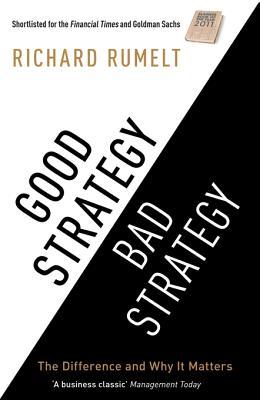More on this book
Community
Kindle Notes & Highlights
Read between
April 17 - May 5, 2024
A leader’s most important responsibility is identifying the biggest challenges to forward progress and devising a coherent approach to overcoming them.
good strategy focuses and coordinates efforts to achieve a powerful competitive punch or problem-solving effect.
Bad strategy tends to skip over pesky details such as problems. It ignores the power of choice and focus, trying instead to accommodate a multitude of conflicting demands and interests.
bad strategy covers up its failure to guide by embracing the language of broad goals, ambition, vision, and values.
Inspirational leadership motivates people to sacrifice for their own and the common good.
Once you gain a facility with the structure and fundamentals of a good strategy, you will develop the parallel ability to detect the presence of bad strategy. Just as you do not need to be a director to detect a bad movie,
If the challenge is not defined, it is difficult or impossible to assess the quality of the strategy.
Good strategy is coherent action backed up by an argument, an effective mixture of thought and action with a basic underlying structure I call the kernel.
Folly is the direct pursuit of happiness and beauty.
“the engineers can’t work without a specification. If it turns out to be a lot more difficult than this, we aren’t going to be spending much time on the moon anyway.”
Many leaders fail badly at this responsibility, announcing ambitious goals without resolving a good chunk of ambiguity about the specific obstacles to be overcome.
performance is the joint outcome of capability and clever design.
the customer is smaller, because the product is newer,
The basic definition of competitive advantage is straightforward. If your business can produce at a lower cost than can competitors, or if it can deliver more perceived value than can competitors, or a mix of the two, then you have a competitive advantage.
Engineering higher demand for the services of scarce resources is actually the most basic of business stratagems.
Good hardware and software engineers are both expensive.
It is hard to show your skill as a sailor when there is no wind.
good strategy at work: diagnosis, guiding policy, and coherent action. You will also glimpse almost every building block of good strategy: intelligent anticipation, a guiding policy that reduced complexity, the power of design, focus, using advantage, riding a dynamic wave of change, and the important role played by the inertia and disarray of rivals.
Good strategy is built on functional knowledge about what works, what doesn’t, and why.
our minds dodge the painful work of questioning and letting go of our first early judgments, and we are not conscious of the dodge.
When I face a problem, or have generated a first hunch, I turn to this panel and ask, “What is wrong with this approach to the situation? What would you do in this case?”


